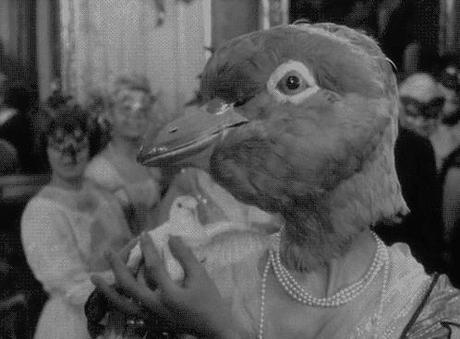
Inspired by the great cartoonist J. J. Grandville, who depicted people with heads of animals and birds, French filmaker Georges Franju decided to open his 1963 remake Judex with a costume ball where everyone is wearing an animal mask. The effect is peculiar, and singularly apt for a motion picture whose protagonist is a kind of pulp hero, half magical character and half dispenser of justice. The overall effectiveness of Judex is only skin-deep, but the movie remains the product of low-key charm and is capable of being wildly funny if you are forced to find your way into it, as it should be, largely by guesswork.
Like actors at the beginning of a rehearsal, football players are the opposite of the supremely talented and ideally relaxed creatures they would like to be. They bring with them a heavy baggage of tensions—tensions so varied that often, in a derby between city rivals, the game itself becomes entangled in painful knots of friction and introspection. It is Andrea Stramaccioni’s merit to have made Inter’s talent ebb and flow (a collective caught half-way between vanity and self-absorption), instead of accepting the static and narrow premises of Allegri’s approach at AC Milan. You are free to believe that old, glorious players such as Zanetti and Maicon have endless energy, but I am convinced that, at this stage in their career, they are unlikely to play a lead out of mere self-assertion if the team does not bring about an easier atmosphere: a greater feeling of confidence, friendliness and informality. Social ease, however, is not the same as improvisation; and in this respect Maicon’s triumphant inventions from the side-line, or Sneijder’s crackling volleys, only make sense once Inter perpetually created a triangle or a web of playing on the opposite side, with the sideways movement of Alvarez and Guarin, and the surge of Nagatomo. (This is also the reason why we have seen very little of Nocerino and why Van Bommel’s performance was boring, staying goalside of the opposite playmaker and just waiting for imminent failure.)
Tactically speaking, Stramaccioni is not doing anything we haven’t seen already. He is reverting to an old 4—4—1—1 system, but everything that under Ranieri’s control was pugilistic and sharp now is under the sign of width and fluidity. If anything, Stramaccioni can be compared to the rise of Di Matteo at Chelsea, since they both utilize their respective playmaker, Mata and Sneijder, in a very similar way. Milan’s narrative, on the other hand, always looks like a cluster of relationships. Inter’s first goal revealed a kitchen scene: wives crooning an old song while they busied themselves with pot and pan. Indeed, one must ask how Allegri thought that they could compete for the title with such poor defending from set-pieces. A moment later, the masculine corduroy pants are ironed and the road to the goal is gnarled balustrade, a rude staircase leading to a loft. For all his dynamism, Robinho is detached from his group and moves, strictly speaking, like an eccentric camper; I have the impression that his runs eat away the physical space in which Boateng is supposed to burst into action, as a mountaineer emerging from a tangle of inimical vegetation. There are, of course, moments of great stock theatricality, largely thanks to Ibrahimovic who now moves on the pitch like the ‘smoke and thunder’ signal of a Shakespearean tragedy; but you have to wonder if this very way of staging the plot is inhibiting technical progress or whether it is what still allows Milan the opportunity of clambering to the highest platforms of Europe. ♦

